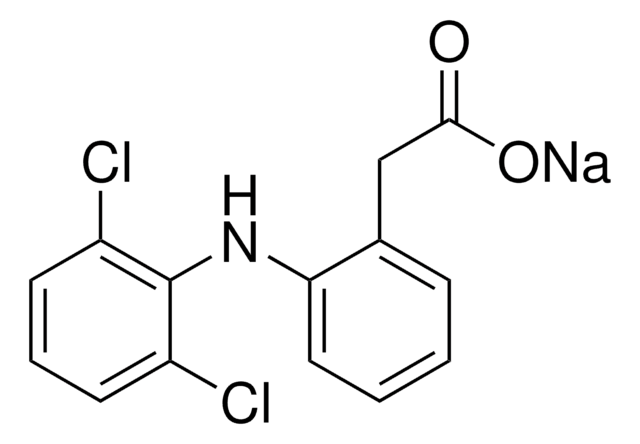Y0000167
Benzyl alcohol
European Pharmacopoeia (EP) Reference Standard
Synonym(s):
Benzenemethanol
About This Item
Recommended Products
grade
pharmaceutical primary standard
agency
EP Reference Standard
vapor density
3.7 (vs air)
vapor pressure
13.3 mmHg ( 100 °C)
3.75 mmHg ( 77 °C)
API family
benzalkonium chloride
autoignition temp.
817 °F
manufacturer/tradename
EDQM
refractive index
n20/D 1.539 (lit.)
bp
203-205 °C (lit.)
mp
−16-−13 °C (lit.)
density
1.045 g/mL at 25 °C (lit.)
application(s)
pharmaceutical (small molecule)
format
neat
storage temp.
2-8°C
SMILES string
OCc1ccccc1
InChI
1S/C7H8O/c8-6-7-4-2-1-3-5-7/h1-5,8H,6H2
InChI key
WVDDGKGOMKODPV-UHFFFAOYSA-N
Looking for similar products? Visit Product Comparison Guide
General description
Application
Packaging
Other Notes
Related product
signalword
Warning
hcodes
Hazard Classifications
Acute Tox. 4 Inhalation - Acute Tox. 4 Oral - Eye Irrit. 2
Storage Class
10 - Combustible liquids
wgk_germany
WGK 1
flash_point_f
213.8 °F - DIN 51758
flash_point_c
101 °C - DIN 51758
Choose from one of the most recent versions:
Certificates of Analysis (COA)
Sorry, we don't have COAs for this product available online at this time.
If you need assistance, please contact Customer Support.
Already Own This Product?
Find documentation for the products that you have recently purchased in the Document Library.
Customers Also Viewed
Our team of scientists has experience in all areas of research including Life Science, Material Science, Chemical Synthesis, Chromatography, Analytical and many others.
Contact Technical Service







